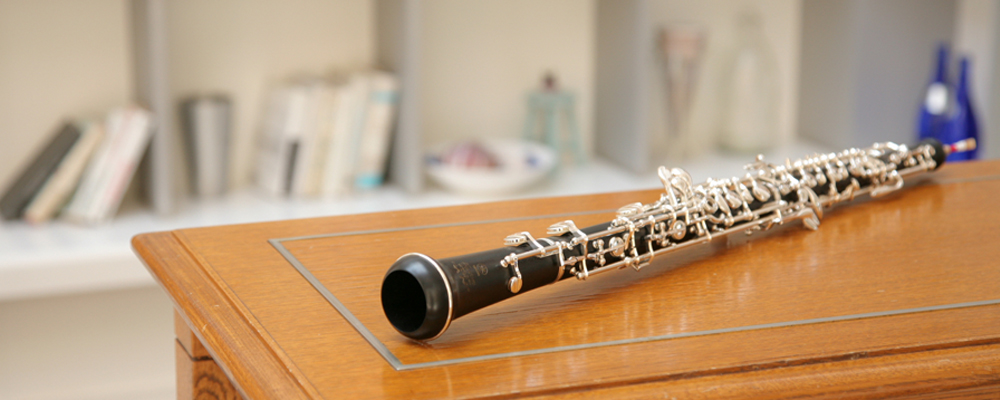The Origins of the Oboe
The Story of the Birth of the Oboe
Did it all start with the reed flute?
A zurna reed. This component produces quite a loud noise all on its own.
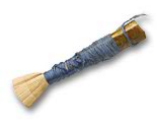
An oboe reed.
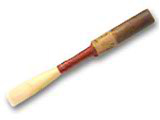
Compare the sound produced by a zurna reed and that produced by an oboe reed.
The zurna is extremely rough and loud, and the instrument is clearly suited to the outdoors. By contrast, the oboe's sound is more mellow and calm. The oboe is an instrument that has been refined to be better suited for chamber music.
High-pitched wood?
Although the precise year when the oboe was invented is unknown, it is said to have originated sometime around the mid 17th century in France. Of course, double-reed wind instruments such as the reed flute were in use in Europe even before then. The shawm-an instrument that was used between the Middle Ages and the Renaissance-is one of the other instruments that can be considered ancestors of the oboe.
The French term for the oboe, hautbois, means wood of high-pitched or loud sound. The English and Italian term oboe, the German terms Oboe and Hoboe, and other words in other languages have the French word as their origins.
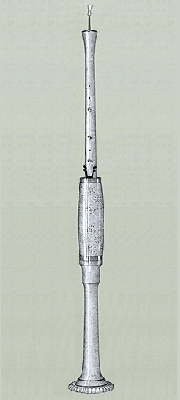
A two-key oboe, c. 1680.
Early oboes were simple
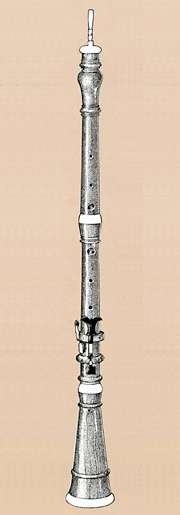
A 22-key oboe, c. 1680.
Because early oboes were simple instruments with only two or three keys, it was not easy to play all semitones. However, instruments with greater numbers of keys started being manufactured at the end of the 18th century, allowing players to produce all semitones consistently.
From the German style to the French style
The oboe first appeared in France in the 17th century. Subsequently, more advanced, German-style oboes spread throughout Europe. At the end of the 19th century, however, oboes with a revolutionary new mechanism were created in France, changing the situation considerably. The new system developed in France was known as the conservatoire style, and it is this style of oboe that is now mainstream.
The French style won because of something that a great composer said?
In the late 19th century, the oboe world was split roughly equally between the German style and the French style. According to one explanation, it was a famous German composer and conductor who completely changed this situation. As the story goes, in the early 20th century, Richard Strauss announced that he preferred the French style, which immediately caused that form's influence to grow.
After that, the German style came to be preferred only in the areas surrounding Vienna and eventually became known as the Wiener oboe. The photograph is of a Wiener oboe used by Austria's Vienna Philharmonic.
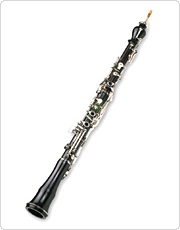
A Wiener oboe played in Vienna.
Musical Instrument Guide:Oboe Contents
Structure
How to Play
How the Instrument is Made
Choosing an Instrument
Trivia
- Why does the oboe lead the orchestra in tuning?
- Do the reeds have a front and a back?
- The keys recoil via springs!
- This is how the oboe and the cor anglais differ
- The charumera was the oboe's cousin
- You can reduce time spent breathing using circular-breathing techniques?
- The Wiener oboe that survived an existential crisis
- Oboe masterpieces: concertos
- Oboe masterpieces: chamber music
- What is the alto oboe?
- The heckelphone, which resembles the oboe
- The oboe is the bassoon's cousin

